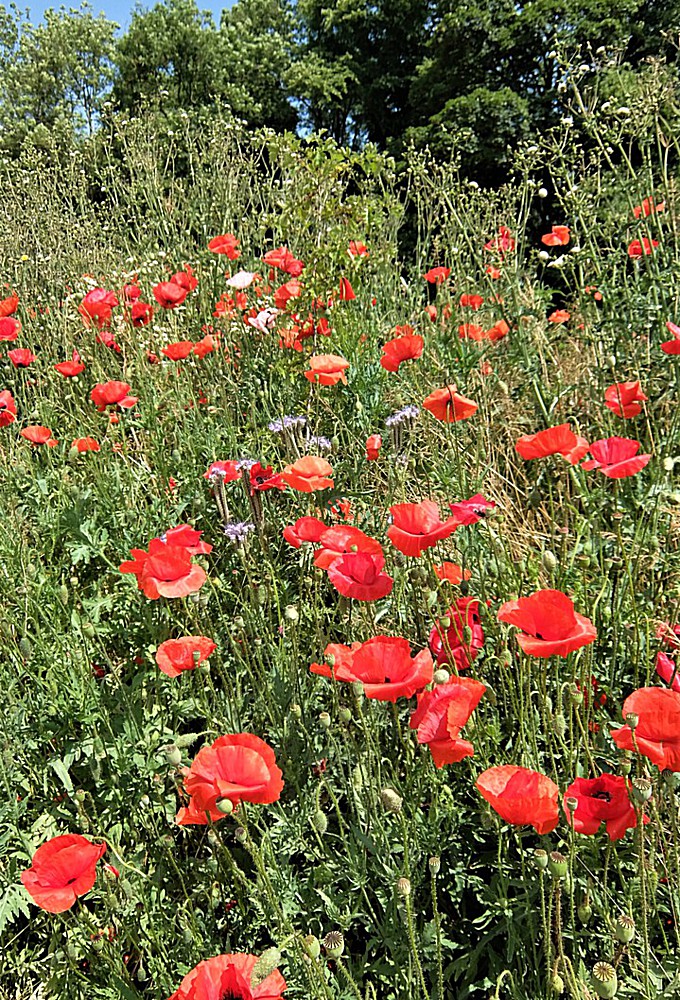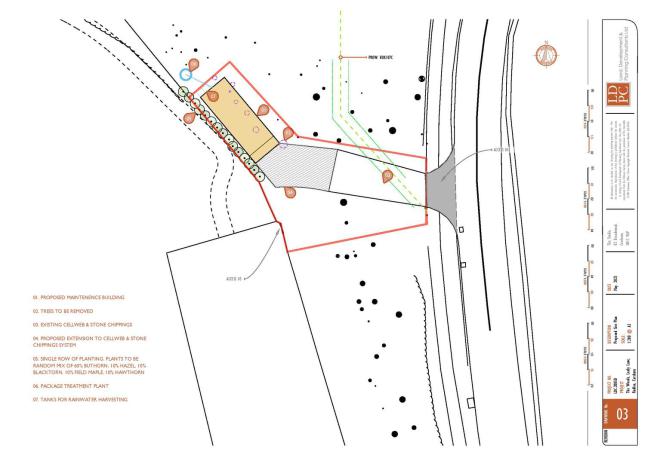Welcome to the Rudloe and environs website.
Here you will find news, articles and photos of an area that straddles the Cotswold Area of Outstanding Natural Beauty in north-west Wiltshire.
Contributions in the form of articles or photos are welcome. Even those with completely contrary views to mine!
Thanks to the website builder 1&1 and Rob Brown for the original idea.
Rudloescene now, in January 2014, has a sister, academic rather than anarchic, website about Box history here: http://www.boxpeopleandplaces.co.uk/
It contains thoroughly professional, well-researched articles about Box and its people.
Contact rudloescene through the 'Contact' page.

The mound between the playing fields of the Leafy Lane organisation and the car park extension has been sown with wild flowers, principally poppies but with quite a bit of Phacelia (see pictures below). In farmers' fields, Phacelia (aka blue Tansy) is grown as a green 'manure' crop, like clover, or as a cover crop. It also attracts many pollinators. Locally, it may be seen in the fields of Charles Hobhouse at Monkton Farleigh; I have also seen it in fields west of Farleigh Hungerford. This excursion came to pass on Midsummer Day (21st June) 2023.
The photograph below shows the site, proposed by the Leafy Lane Natural Burial Woods (LLNBW) organisation, of a utility building to be used for the 'secure storage for the equipment necessary to maintain the burial site'. The plan is described in planning application PL/2023/04117 which, inter alia, states that the 'proposed building will be positioned where 7 no ash trees that are due for removal are currently located'.
Whilst the rationale for the building is valid, the location could be improved and would obviate the supposed requirement to remove the ash (and other trees not mentioned in the application e.g. hawthorn). Notwithstanding the existence of a tree preservation order on all the trees in the wood, 'reasons' can always be found to remove any tree (see next para); ironically, in 2017/18, two 'healthy' beeches fell within weeks of each other at the time of the rights of way planning inquiry. The Ash Tree was the last book published by the foremost English ecologist of his generation Oliver Rackham before his untimely death in 2015. His view of ash dieback included the following: 'Defra produced a lengthy report on Ash Disease making much of meagre evidence. Their science-based advice amounts to: Do Nothing; for once I agree... Some talk of 'eliminating' the disease by sanitation felling. This might have worked 15 years ago when it was rare but it is too late now...'.
Talking of TPOs and their usefulness, when the Springfield Close estate was built in the late 60s/early 70s, TPOs were placed on twenty-four trees at the southern edge of the estate; of these, six now remain - so much for TPOs (see the 25th April 2019 article here: 25th April 2019 article).
The plan above is taken from the planning application; it is inadequate in a number of respects. The 'key' to the plan has seven elements, the second of which (number 02) is TREES TO BE REMOVED. If you can find said trees on the plan you are a better man/woman/trans/non-binary/gay/lesbian/queer (enough already) than I am (or am not). The covering letter to the application states: (talking of the toilet to be provided) 'The facility will be served by a package treatment plant, as shown on drawing LDC.2085D_03'. The plan simply shows a small circle adjacent to the proposed building with a line running from the building. There is no detail (anywhere) about how this facility will operate or be maintained (it is, effectively, a small septic tank).

